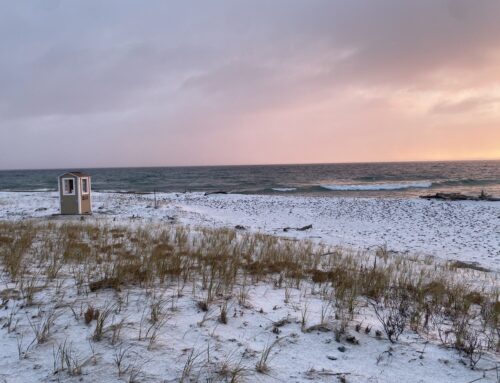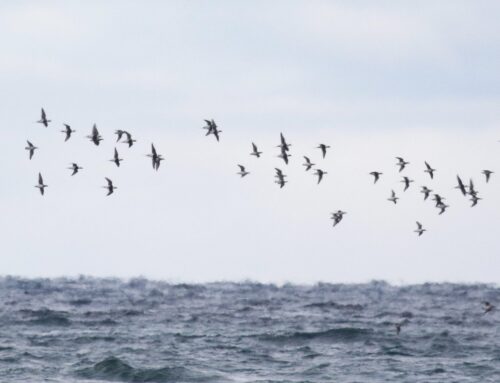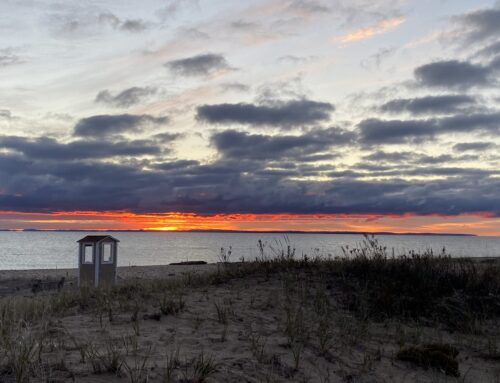The 2025 fall waterbird count at Whitefish Point has officially ended. The last few days of counting were a reminder of why the season ends when it does. With just a few waterbirds moving, it’s encouraging to think that we have successfully documented the bulk of waterbird migration moving past the point this fall. Even still, it’s an odd feeling after three months to wake up in the morning and wonder what might be flying past the now-empty beach.
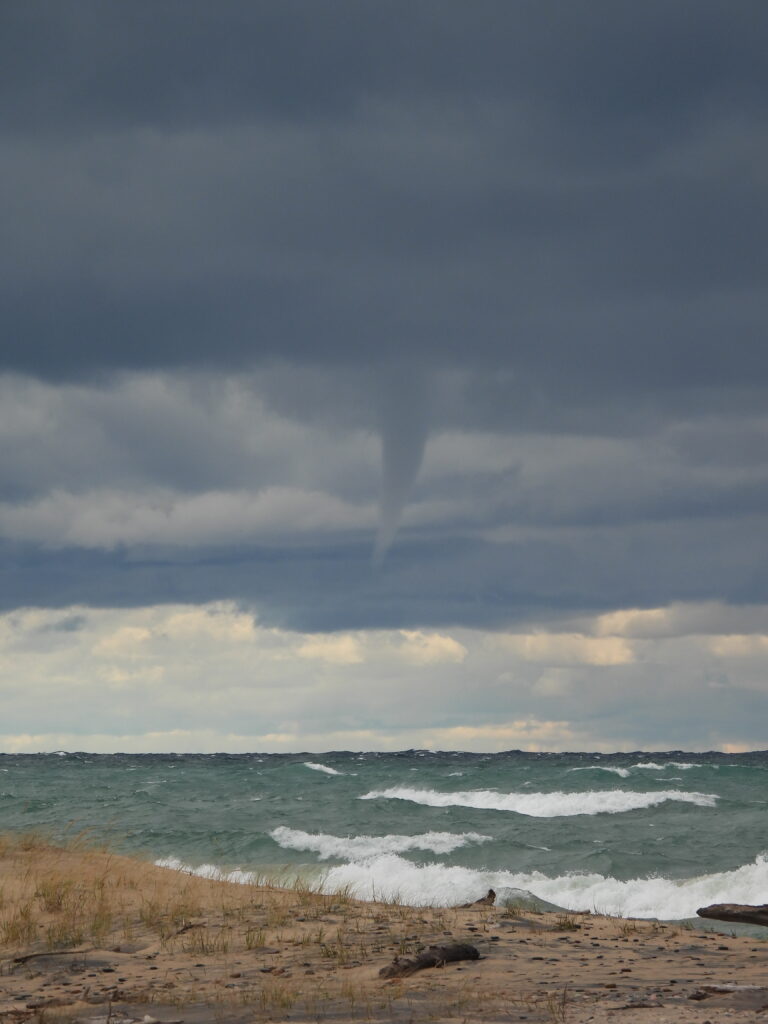
Waterspout forming over Lake Superior. Photo by Frank Fabbro
The first two days of counting this week brought strong 20-30mph Northwest winds. At other times this season, such winds yielded terrific flights with thousands of ducks. At this late date, waterbird numbers were around 100 for each day. The main species moving are still Long-tailed Ducks, Common Goldeneye, and mergansers (both Red-breasted and Common). On the 12th, amidst some of these strong winds and low duck numbers, a single large brown sea duck flew towards me at the count. I realized that this heavy-bodied duck, with its brown and black speckled plumage and its large blocky head, was an eider! As the bird flew closer to the tip of the point, it surprisingly dropped down onto the choppy lake, becoming maddeningly difficult to observe. In what felt like a repeat of my experience with the unidentified phalarope a month ago, the eider would pop into view for just a fraction of a second before the whitecaps obscured my view. Eventually, I altogether lost sight of the bird and accepted its fate as an eider sp. Both King and Common Eiders are arctic nesting sea ducks that are rare visitors to the Great Lakes. Despite the flashy look of adult males, identifying these brown immature or female-type plumages requires a bit more scrutiny.

Red-throated Loon. Photo by Frank Fabbro
The last two days of counting this week had similarly low waterbird movements corresponding with predominantly east and southeast winds. Along with the previously mentioned species, a handful of White-winged Scoters, a Black Scoter, and a single late American Wigeon were seen flying past the count. I started the season talking about Red-necked Grebe flights, so it only seems fitting that I should mention them in my last blog as well. The grebes kept flying this season, peaking in the August sun and September rains, but still a constant presence in the October blows and the November snows. We had 62 Red-necked Grebes migrating by in the last four days of the count, with almost half of those moving in the last hour of November 13th. Back in August, we could have reached that total with just two flocks of birds. The drawn-out window of their movements at Whitefish Point leaves me with lots of questions. Are these late-moving birds coming from a different part of the breeding range? Did they use some alternate molting location? Did they try to winter on some northern lake that froze over?

Long-tailed Ducks. Photo by Frank Fabbro
The non-waterbird highlights this week were scarce. Strong winds made it difficult at times to hear or see any finches moving. There continued to be large flocks of Evening Grosbeaks, Pine Grosbeaks, and Redpolls moving around the point, while most of our Snow Buntings have now left the beaches. Yet another Snowy Owl roosting at the point on the 12th and 13th was a treat, and later in the week, I had great looks at some other raptors, with Rough-legged Hawk and American Goshawk flying in off the lake. After a bit of an absence since the early season, we again have a local Merlin at the point that is skillfully picking off winter finches.
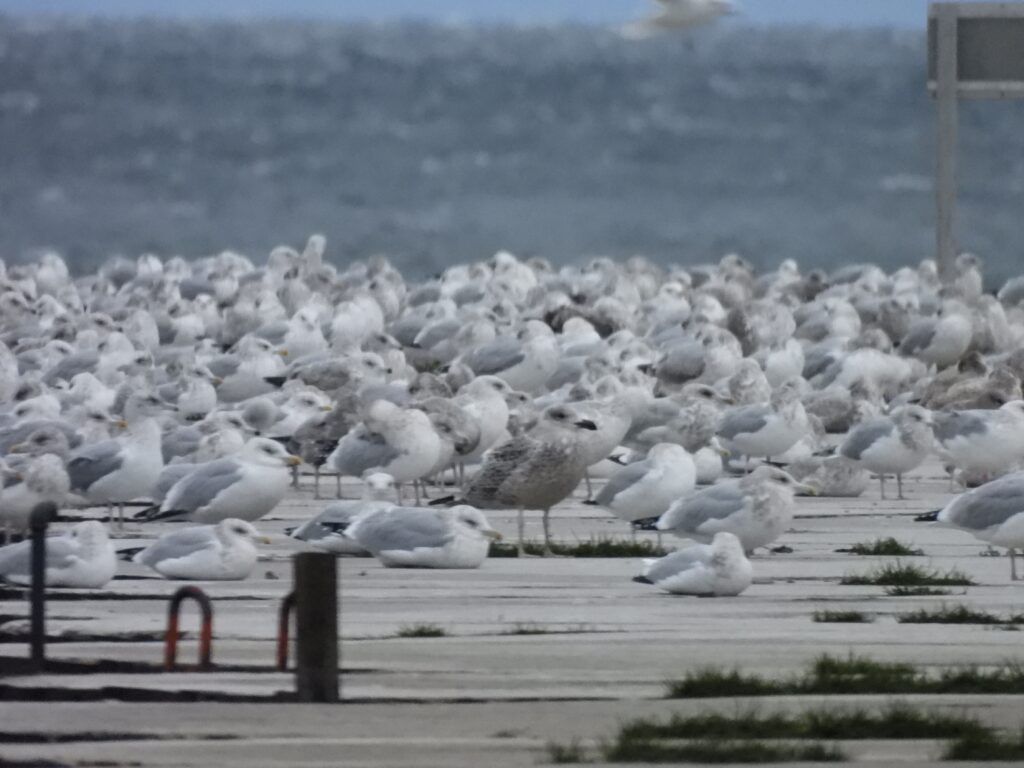
Our last new species for the fall of 2025, a Great Black-backed Gull in the harbor. Photo by Frank Fabbro
After the count on the 15th, the waterbird station was wheeled and anchored into its winter resting place off the beach with the help of some local volunteers. I want to thank these locals and the many visitors from every corner of the state and the country who stopped by this fall. Throughout the season, I had many people deliver snacks, bug spray, and good company out at the count. Whitefish Point is truly a magical place to sit in one spot and take in the passing seasons. Clay and I observed 182 species of birds from the waterbird count this fall, including 74 species of waterbirds, and more broadly, 211 species of birds at Whitefish Point. For a more thorough recap of totals, keep an eye out for our end-of-season reports and recap articles in Michigan Audubon’s publication, the Jack Pine Warbler.
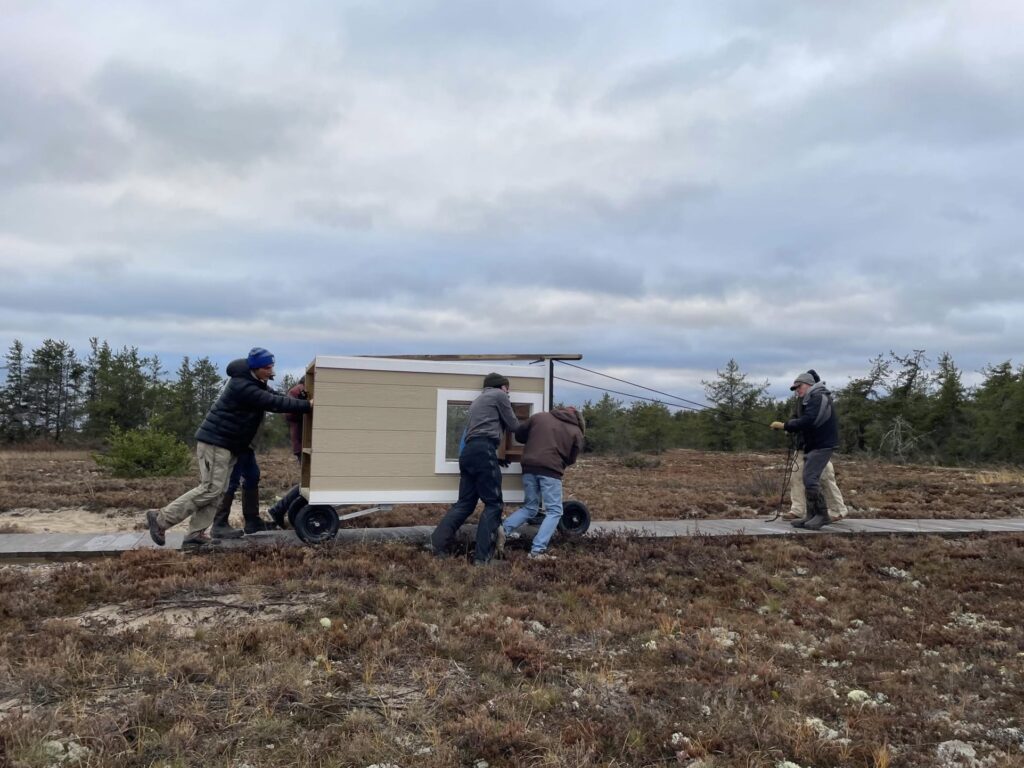
Photo by Susan Kielb.
~Frank Fabbro, 2025 Fall Waterbird Counter


